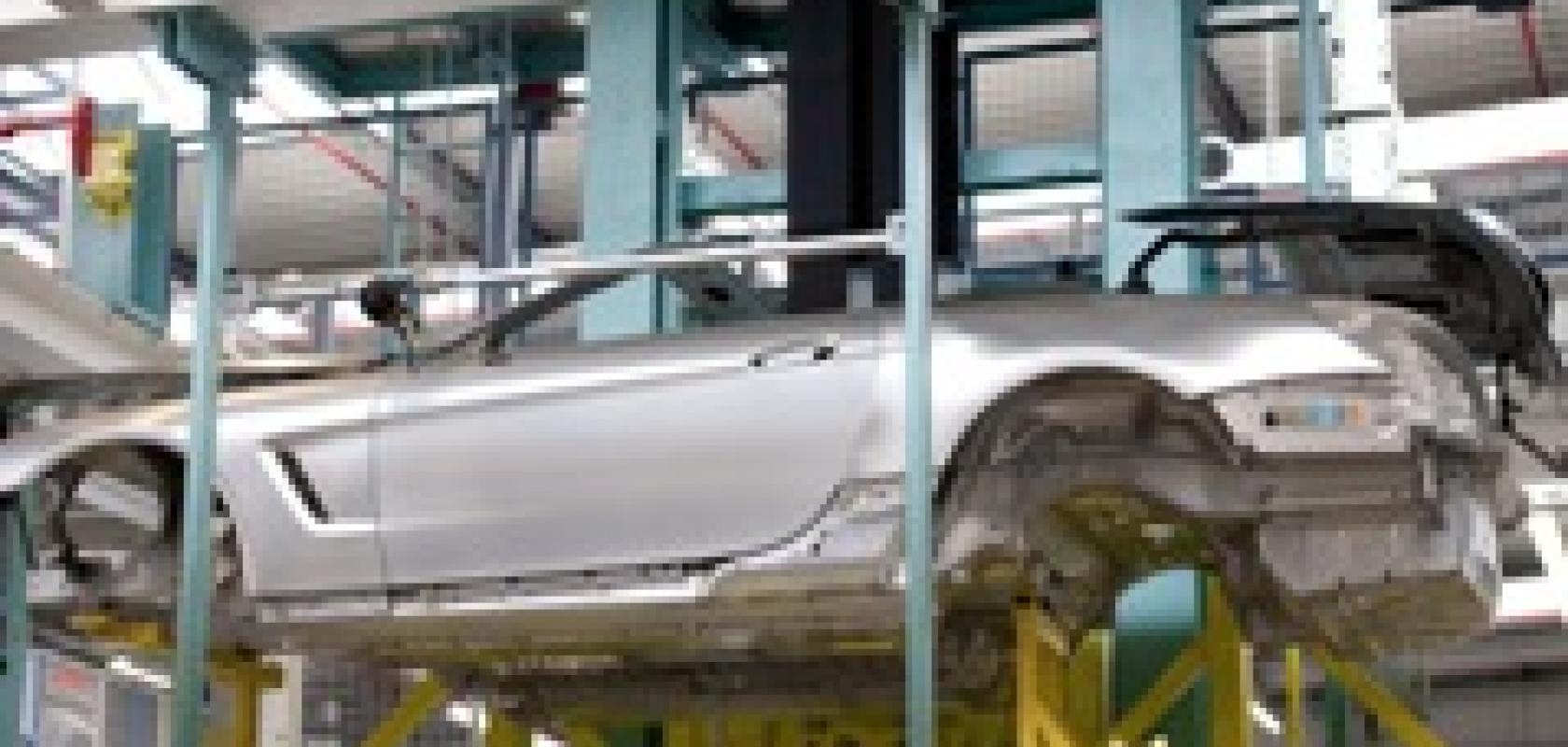To ensure traceability of the production process of its SL-Class vehicle, Mercedes-Benz now employs various code reading systems to assign each body part to a specific vehicle at its plant in Bremen, Germany.
At the bodyshell production for the Mercedes SL in Bremen, 12 Simatic MV440 code reading devices from Siemens are employed for detecting codes engraved directly into the aluminium of the car body. Eight additional reading devices detect the affixed data matrix labels, which – for example – are used for the car body number.
‘We now know exactly which fender was joined on what day to which chassis, and what torque amount was used to tighten the individual bolts that attach the engine hood to its support,’ explained Oliver Schumacher, a bodyshell construction specialist and responsible for the startup of new manufacturing facilities at Mercedes-Benz.
Traceability is important for both product liability reasons and because of legal regulations, which stipulate a comprehensive long-term documentation of production. In addition, the production processes can be qualified and analysed in detail with the data.
The optical system includes an LED ring flash, which provides optimal lighting for distances up to 80cm. For longer reading distances, the system can also be combined with external illumination.
‘We simply take advantage of the reflective properties of the aluminium surface,’ explains Schumacher. ‘The smooth aluminium sheet reflects the light. The matrix code engraved into the sheet causes a different light reflection making the individual dots appear darker and clearly stand out from the surroundings.’
The car body number is applied to the car body in the form of a machine-readable label at the very beginning of the production process, and serves as the unique identification of the vehicle throughout the body-in-white construction.
The body of a vehicle is a complex creation comprised of many individual components. Some are made in-house, others are supplied by external vendors. For a complete process documentation, it is necessary for each of these parts to be unambiguously assigned to a specific vehicle, so that later it can be reproduced which part was installed on what day in which vehicle.
For this purpose, a parts code consisting of a rectangle with individual dots is scored directly into the aluminium, thus unalterable associating it with the respective body part. The structure of the code eliminates reading errors and ensures that the vehicle can be identified all critical places of the production process.
‘Let's take the engine hood, for example,’ explained Udo Dierks, responsible for the planning of the bodyshell construction at Mercedes-Benz. ‘The hood already receives two hinges at a relatively early production stage, which are later bolted to the front section of the vehicle. During the installation of the supports, the torque amount of each individual bolt connection is captured and saved in the long-term documentation.’
To be able to assign this safety-related process data to a specific engine hood and later to a specific vehicle, two identification processes are necessary: The first one takes place immediately following the installation of the hinges, and is used to assign the process data captured during the bolting to a specific engine hood. The second one occurs after the hood has been mounted to the front section of the vehicle, and enables the hood to be assigned to a specific car body.
Siemens’ code reading system, Simatic MV440, is a camera that photographs a barcode or matrix code, converts it into a digital format and passes it on to the MES (manufacturing execution system) over the fieldbus.
The code reader with IP67 degree of protection is available in resolutions from 640 x 480 pixels to 1,600 x 1,200 pixels. It can capture up to 80 codes per second and is also capable of recognising up to 150 codes at once that are within its field of view.
Further information:


